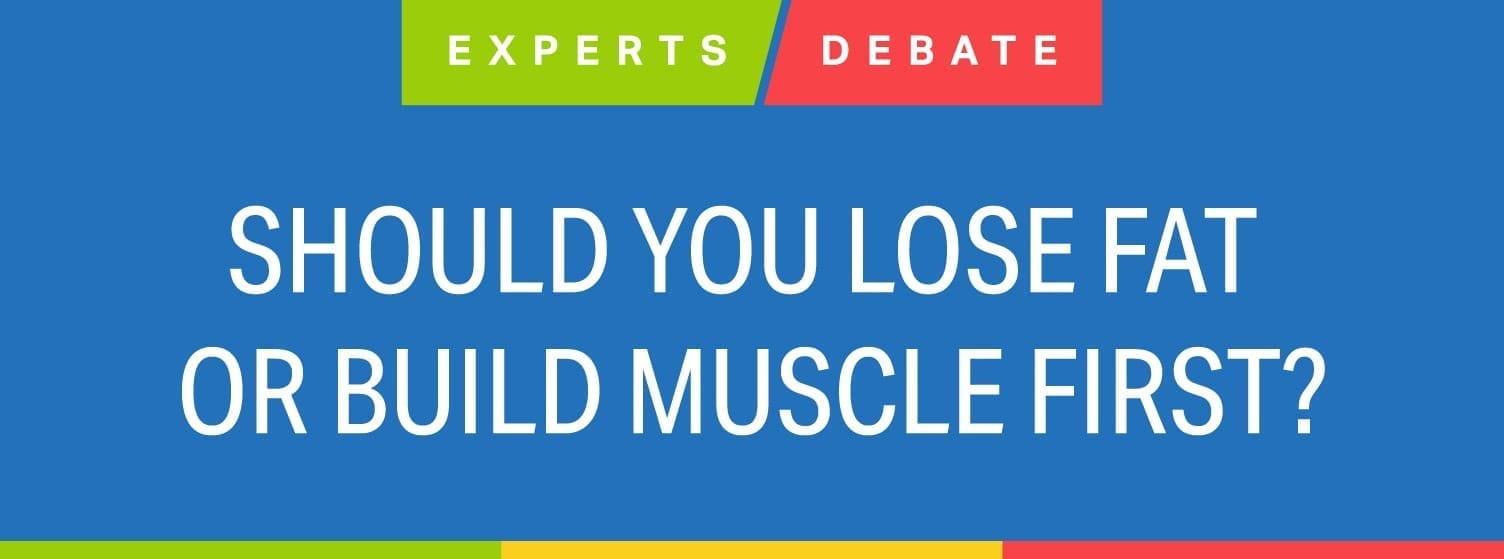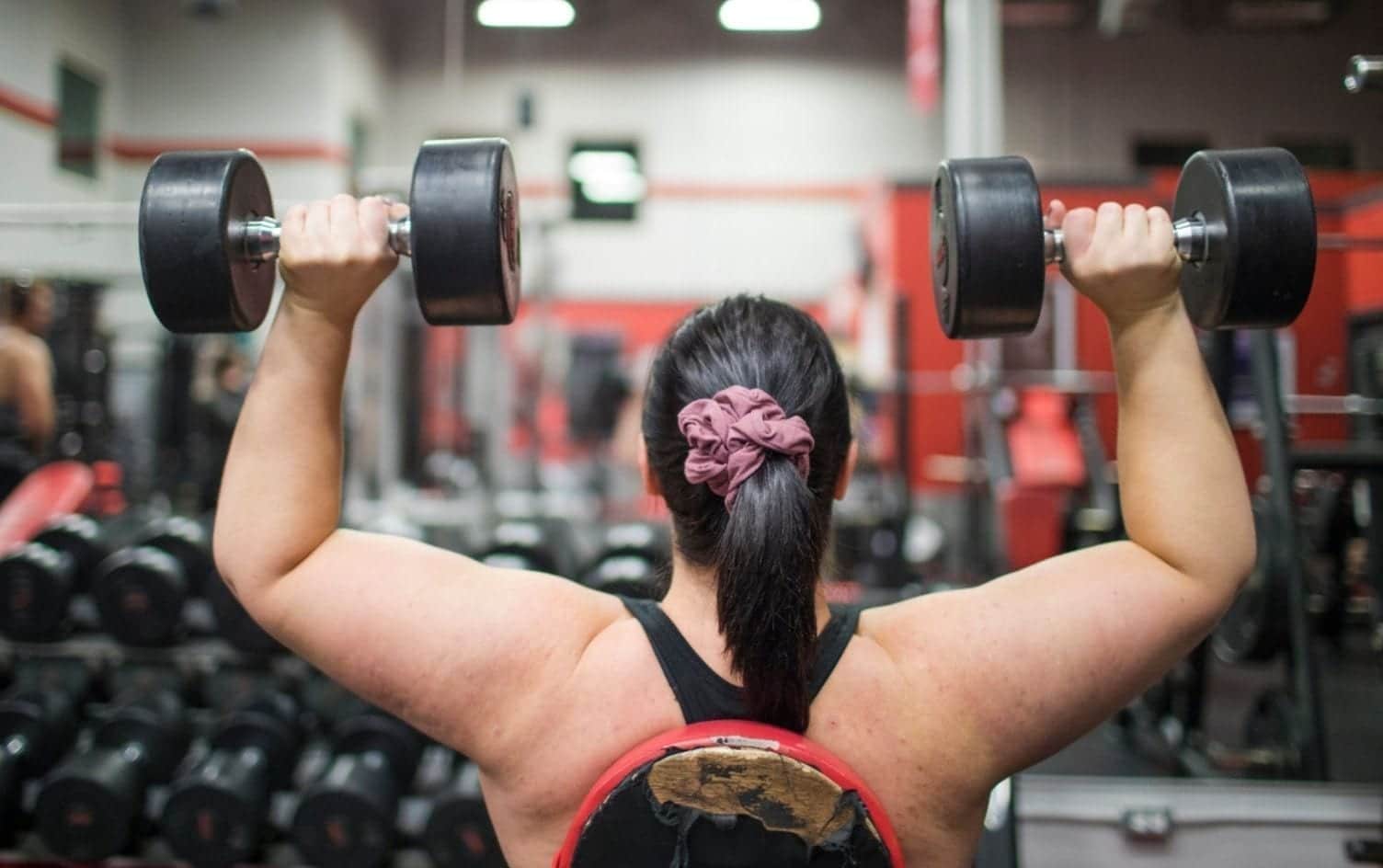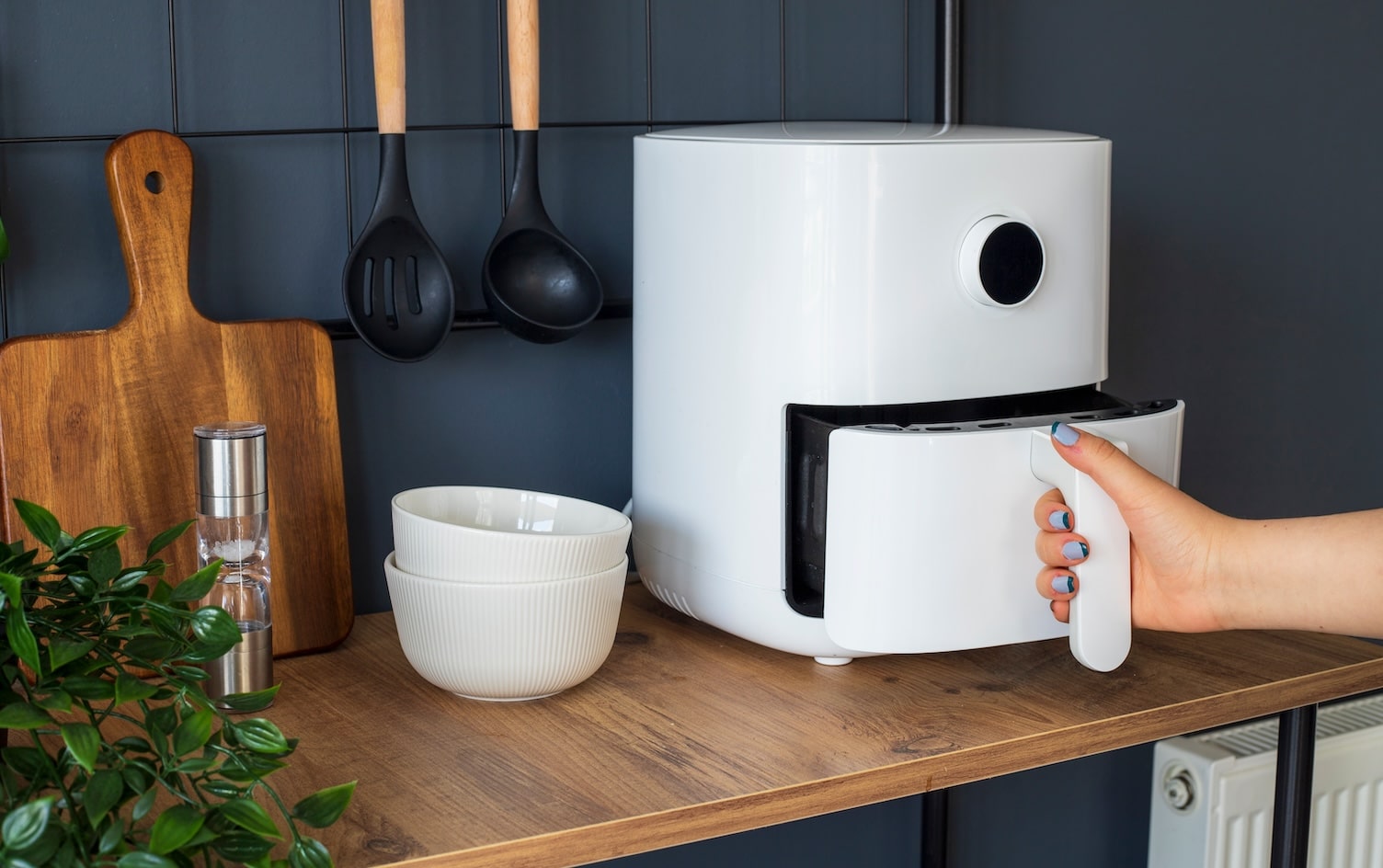Fat-loss and muscle-building are sort of like the chicken and the egg of healthy body recomposition. When you shed pounds and lose fat (especially around your belly), you speed up your metabolism and have the energy to take on harder workouts and, in turn, build muscle. However, muscle-building can also support fat-loss since muscle is highly metabolically-active tissue. That means the more muscle you have, the higher your basal metabolic rate (BMR), or the number of calories your body burns at rest, explains Ben Tzeel, a registered dietitian and certified strength and conditioning specialist. Up your muscle mass, and you can also lose more fat.
Naturally, this leads to a difficult question. Which should you focus on first: slimming down or building muscle? Experts take sides in the great fat-loss versus muscle-building debate and share what you should do first, no matter your goal.


Not only will you see weight loss sooner than muscle growth, but you’ll also experience benefits like improved mood and better sleep. When you focus on building muscle first, you might gain weight initially, which could be discouraging and might even make you want to quit your healthy eating and exercise plan.

When you get lean, you improve your body’s hormonal balance and pave the way for optimized muscle-building with better insulin sensitivity (the way your body responds to and processes blood sugar).

Building muscle should be your main focus as it increases your metabolism and makes losing fat easier. If you want to lose fat first to improve your body composition, you’ll need to strength train and up your protein intake to minimize the amount of muscle you lose, too.

Losing fat and building muscle aren’t mutually exclusive, and both are important for lasting weight loss and lifelong health and fitness. With a balanced workout and nutrition plan, you can accomplish both goals simultaneously.

It depends on your body fat percentage (which most gym trainers will measure for free). If you’re living with obesity (over 25% body fat for a man or more than 32% body fat for a woman), aim to lose fat first. The higher your body fat percentage, the harder it is to gain muscle while minimizing fat gain. If you have a lower body fat percentage and don’t need to lose as much fat, your body is more supportive of building muscle first.
THE ARGUMENT FOR LOSING FAT

There are numerous benefits to fat-loss including improved sleep and mood, improved cholesterol and blood sugar levels, reduced blood pressure, decreased risk of heart disease, diabetes, certain types of cancer and early death. Fat-loss also boosts energy.

Having a lower body weight can reduce stress on your joints — making it easier to tackle challenging workouts and build muscle.

You can see results from fat-loss significantly faster than muscle gain, which tends to be a longer process. When you lose fat first, you reveal the musculature you have underneath, which you can then refine and sculpt. While it’s true increasing muscle mass can potentially help you burn more calories by increasing your metabolism, that requires a considerable gain in muscle mass which takes time.
THE ARGUMENT FOR BUILDING MUSCLE

Increased muscle mass speeds up your metabolism, especially the amount of calories you burn at rest (considering we burn anywhere from 60–75% of our daily calories at rest, this can be a big boost for fat-loss).
Eating and exercising to build muscle with a high-protein diet helps you slim down as well. For example, a study in The American Journal of Clinical Nutrition on people who lifted weights, did high-intensity exercises, and had a calorie deficit, found those who ate more protein lost 27% more fat and gained eight times as much lean muscle mass.

Along with an improved metabolism, there are numerous benefits to muscle-building: You can improve your cardiovascular and joint health, decrease your risk of diabetes and certain types of cancer, improve your mental health, and build strength and support bone health, which decreases your risk of osteoporosis and falls.
THE BOTTOM LINE
Whether you choose to lose fat or gain muscle first depends on your personal health profile and fitness goals. A registered dietitian or certified personal trainer can help you choose the best route for you, says Wilson.
To support fat-loss efforts, use an app like MyFitnessPal to set a daily calorie goal for a slow-and-steady weight-loss plan. “Make sure you’re including at least 0.7 grams of protein per pound of body weight (or 1.6 grams of protein per kilogram) to ensure you’re losing primarily fat, not hard-earned muscle and find an accountability buddy to help you stay on track,” says Tzeel. For optimal results, add workouts you enjoy to your life, ideally including a variety of cardio exercises like a HIIT workout, interval workout and long walk or run plus 2–3 days of strength training each week to preserve muscle mass, suggests Wilson.
If you’re looking to build lean muscle first, a similar program will do the trick — higher weight, lower repetition strength-training makes your muscles stronger while aerobic endurance exercises like running, cycling or walking uphill increases your resilience, says Buckingham. Make sure to fill up on high-quality proteins like seafood, chicken, turkey, beans, lentils and tofu and spread your protein intake throughout the day with at least 20 grams of protein per meal to encourage muscle growth, says Wilson.
All in all, losing fat and adding muscle have a lot in common when it comes to the process, says Woodward. For both, you need to eat properly, move your body regularly, set goals, manage stress and ensure you’re getting enough restorative sleep.
Unlock an experience that’s like having a dietitian, trainer and coach — right at your fingertips. Go Premium for expert guidance and exclusive tools that will help you reach your personal health goals.




